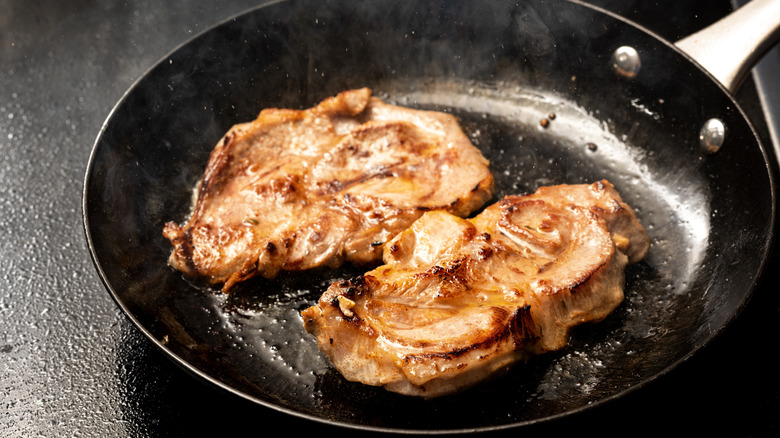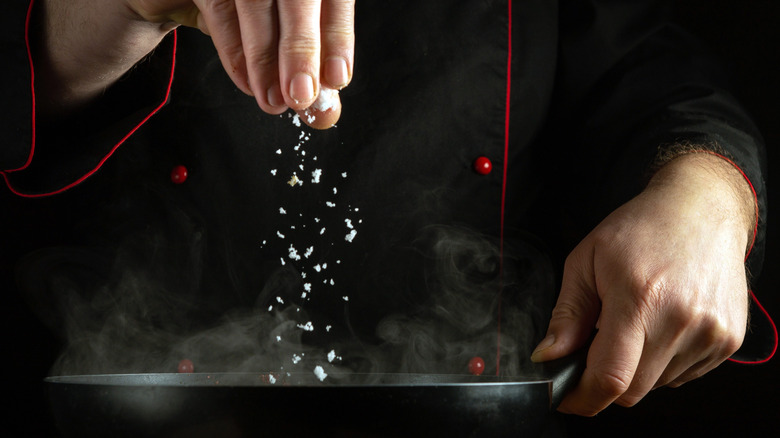The Key To Preventing Hot Oil Splatter Is Already In Your Kitchen
We're willing to bet that just about every home cook has had to dodge hot oil splatters as they try to sear something in a piping-hot pan. Not only are these splatters dangerous, but they can lead to greasy oil spots on your clothing and all over your kitchen, from the stovetop to the countertop. Forget splatter screens or special tools that clutter up your cabinets — the easy solution is within arm's reach, right in your spice rack. Next time you're cooking something and want to prevent oil splatters, add a pinch of salt to the oil in the pan before tossing in your ingredients, as advised by TikTok creator @brunchwithbabs.
This tip works because the culprit behind that pesky splatter is actually the moisture in the pan: As the item you're searing makes contact with the skillet, all those water molecules heat up and start kicking up a fuss. The salt works its magic by soaking up some of the moisture in whatever you're making, which in turn reduces the amount of splatter. While this trick won't completely eliminate the issue, it will significantly reduce it. As for the amount of salt you need, keep it small — a mere pinch will do the trick. And if you happen to spill any of that oil, reach for flour or cornstarch to absorb the mess.
Tips for adding salt to your pan
Even though salt minimizes oil splatter by reducing the moisture in the pan, it won't be much help if the item you're cooking is already super moist. So, another trick for a splatter-free cooking experience is to dry your food as much as possible before it hits the pan. This will also help you get a better sear on whatever you're cooking, adding some serious flavor (and speaking of flavor, we've also got a no-splatter bacon hack that will change everything). Avoid the temptation to add too much salt — if you dump in a considerable amount, you may eliminate a tiny bit more splatter, but you'll likely end up over-salting and ruining your dish. For items that need to cook for quite a while, you may want to sprinkle a bit more salt as you flip them, but don't be too heavy-handed.
As for how you should distribute the salt across the pan, keep in mind that you're trying to neutralize as much moisture as possible. That means even though it's a small amount of salt, you should scatter it pretty evenly across the entire pan, not just in one spot. Also note that this particular tip is for when you're sautéing or pan-frying something in a small amount of oil. Salt won't have the same effect if you're deep-frying something in an inch or more of bubbling liquid.

